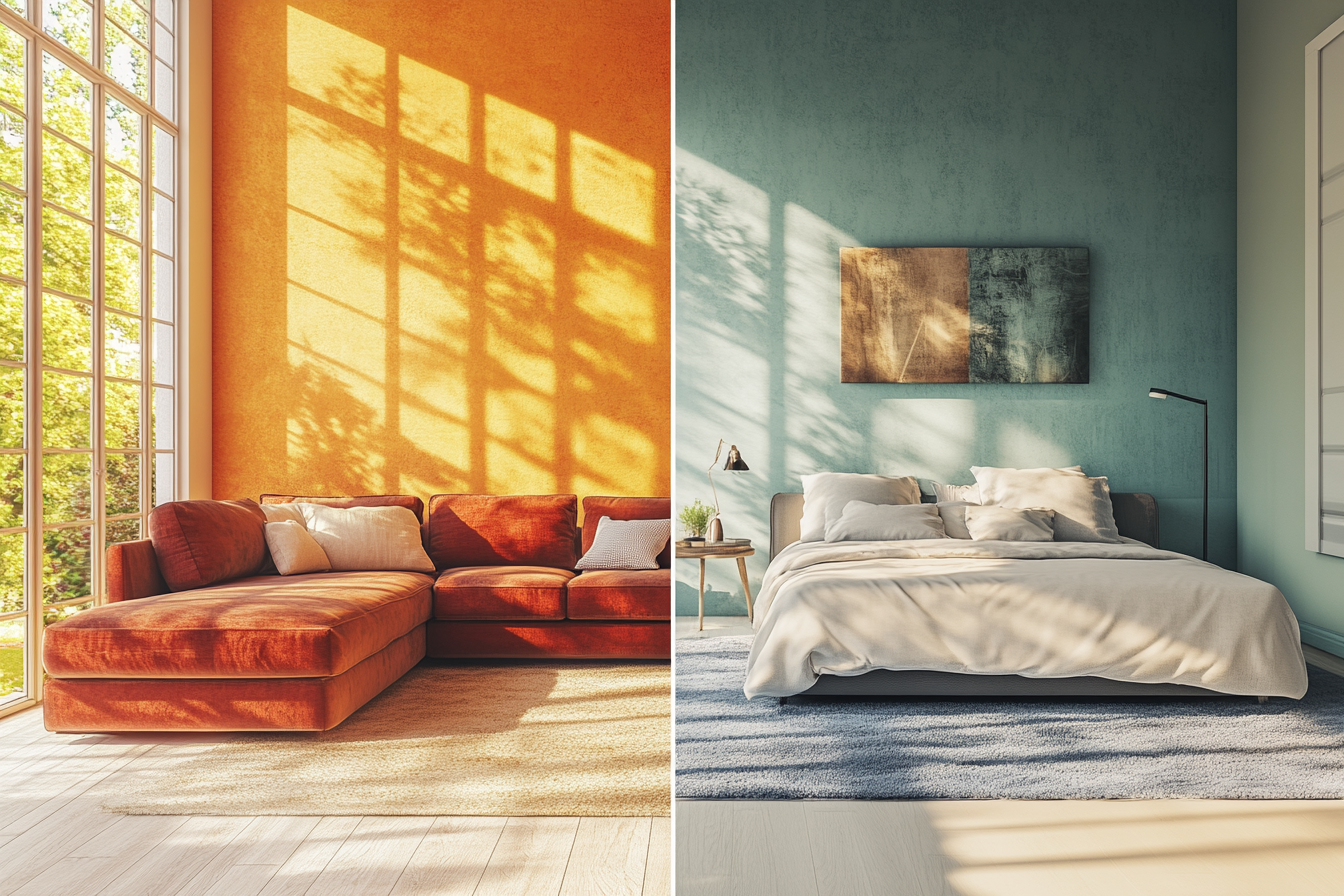Interior Design & Digital Décor
Embracing the Global Virtual Revolution
Interior design is evolving with technology, and e-design is transforming how we create and experience our spaces. As someone who travels frequently and works with clients worldwide, I’ve seen firsthand how digital décor opens endless possibilities—allowing homeowners to connect with their ideal designer, regardless of location. Whether you live in New York, Rome, or Dubai, the right designer for your vision might not be in your city, and that’s where virtual services make all the difference.
Below, I’ll explore six key ways e-design is reshaping the industry and why it’s an exciting solution for modern living.
1. Embracing E‑Design: Accessibility & Convenience
E-design removes geographical barriers, allowing clients to access expert design services from anywhere in the world. Whether you're in a remote town or a bustling city, you can collaborate with a designer who truly understands your style and needs.
Virtual Consultations: Connect with experts via video calls and digital platforms, making professional design advice accessible from anywhere.
Global Flexibility: Designers are no longer limited by geography, so whether you’re based in New York or Tokyo, you can work with the talent that best matches your style.
Time & Cost Savings: Flexible e‑design packages save both time and money compared to traditional in‑person consultations.
For further insights, check out Architectural Digest and Houzz.
2. Integration of Technology & Design Trends
Technology plays a crucial role in modern interior design, allowing clients to visualize their spaces before committing to changes. From augmented reality to 3D renderings, the digital revolution is making design more interactive than ever.
Augmented Reality (AR): AR tools let clients see design changes in real time, ensuring a perfect fit before implementation.
3D Rendering: Detailed digital models help in planning layouts, colors, and textures for a precise design vision.
Smart Home Integration: Modern e‑design seamlessly blends cutting‑edge technology with stylish aesthetics.
Learn more about tech trends in design at Elle Decor.
3. Personalization & Customization in Digital Décor
One of the biggest advantages of e-design is the ability to tailor every detail to your personal taste. Digital platforms offer tools that help clients experiment with different aesthetics before making final decisions.
Tailored Solutions: Online platforms provide customized design packages that match individual tastes and lifestyles.
Interactive Mood Boards: Digital tools allow experimentation with color palettes, textures, and styles, crafting a unique design blueprint.
Global Collaboration: My experience with international clients shows that you can connect with the perfect designer—regardless of where they live—to achieve inspiring results.
E‑Shopping Integration: Direct links to decor purchases simplify the transition from concept to reality.
4. Budget‑Friendly Solutions with E‑Design Services
Virtual interior design can be a smart choice for those looking for professional expertise while maintaining budget control. The structured nature of e-design services ensures financial transparency
Transparent Pricing: Many services offer clear, upfront pricing, making budgeting simple and stress‑free.
Scalable Options: Whether it’s a complete makeover or just a few tweaks, there’s an e‑design package to fit every need and budget.
Efficient Resource Use: Digital design minimizes waste by planning purchases accurately, which is especially beneficial when managing projects across different locations.
For budgeting tips, explore resources on HGTV.
5. Future Trends & Innovations in Virtual Home Styling
As digital technology advances, the future of interior design is becoming even more dynamic. Artificial intelligence (AI), real-time collaboration tools, and sustainable design innovations are shaping the next generation of e-design.
AI & Machine Learning: Emerging technologies offer personalized recommendations based on user preferences.
Enhanced Collaboration: Virtual platforms are evolving to include real‑time collaboration tools, fostering creative synergy across continents.
Sustainable Design Practices: E‑design is paving the way for eco‑friendly innovations that balance aesthetics with functionality.
Stay updated on future trends by visiting Dezeen.
6. The Freedom to Design Without Borders
One of the greatest perks of e-design is its ability to connect people across the world. As someone who works with international clients and frequently travels, I’ve seen how this approach eliminates geographical limitations and fosters creativity.
Work with Your Favorite Designer Anywhere: Love a designer’s work but live in another country? E-design makes collaboration possible.
Cultural Inspiration & Diversity: Global design services allow for a blend of styles and influences from different cultures.
Seamless Communication & Execution: With video calls, digital presentations, and mood boards, international projects can be managed as smoothly as local ones.
References & Further Reading:
Architectural Digest - How Virtual Interior Design is Changing the Industry
Read here
(Explore how technology is reshaping the interior design world, making professional services more accessible and efficient.)Elle Decor - The Future of Home Design: How AI and Digital Tools are Revolutionizing Interiors
Read here
(An in-depth look at the role of AI, 3D rendering, and virtual reality in modern home styling.)Dezeen - Digital Interior Design: How Remote Services are Reshaping the Industry
Read here
(Trends, case studies, and expert opinions on the rise of virtual design services and what’s next.)Houzz - E-Design vs. Traditional Interior Design: Which is Right for You?
Read here
(A practical guide comparing e-design services to traditional in-person design and helping clients decide which suits their needs.)









